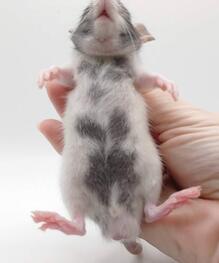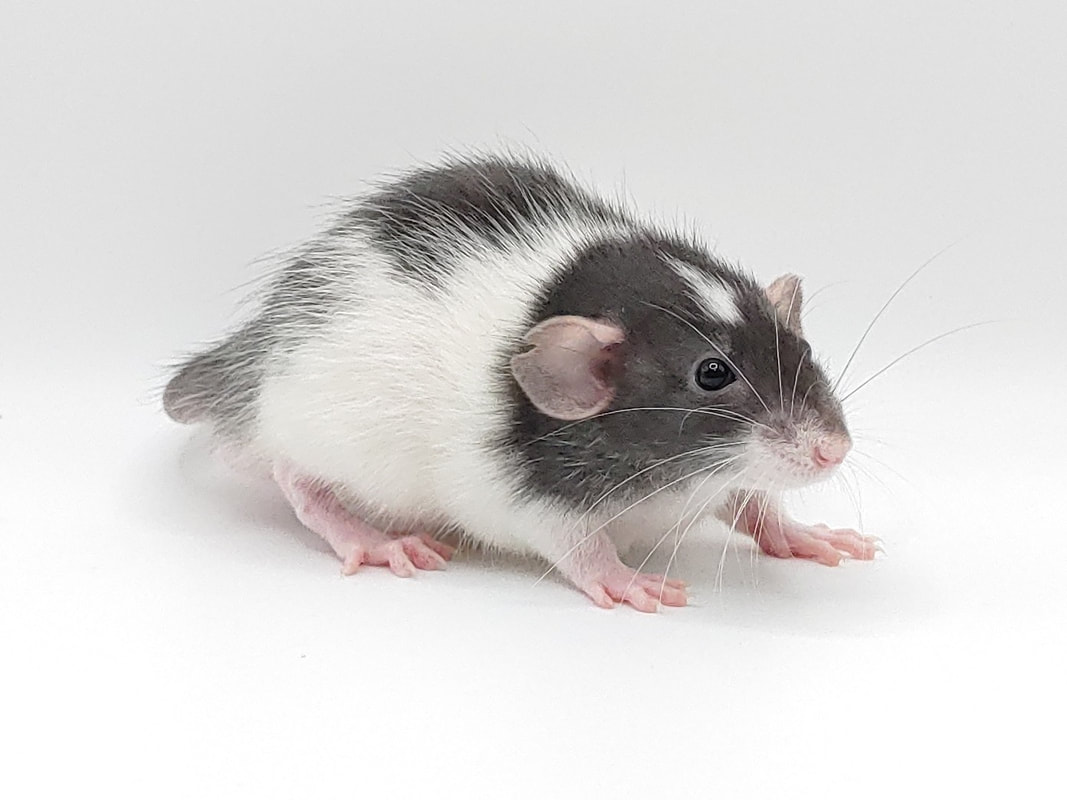Varieties We Breed
Here at EVO we specialize in several varieties of rat. Unlike dogs that are identified by Breeds, rats are identified by variety, which is the combination of genes that are expressed (visible). We do not breed every variety of rat, or every color or coat type, we breed the varieties that we find visually appealing to us, or that we enjoy the challenge of producing. Some varieties may be combined, such as Silvermane and Harley, or Harley and Downunder. Most of the varieties we breed come in both Dwarf and Standard sizes.
WerewolfWe have been working with this truly unique gene since 2018. We have a News Post giving more information about Werewolf here.
Thank you to DEMOcrattery in Chicago forgiving us this amazing variety. |
|
|
|
|
Black Eyed SiameseWith lineage back to Georgie 2.0 and a beautiful Black Eyed Siamese from Atlantis Rattery, we have developed a stunning line of BE Siamese with full points (self), big expressive eyes, and sweet temperaments.
|
MartenOriginating from Europe where they are referred to as 'Red Eyed Devils', our Martens with red eyes that almost glow from within, were imported by Atlantis Rattery. We breed Red Eyed Black, and Black Eyed Silver Agouti.
|
Pearl, Merle and MinkAlong with Werewolf, DEMOcrattery was generous enough to give us starting stock for a pearl line. Truly beautiful rats, with multi-dimensional coats. While we have not had merle pop up in our lines for some time, it is a variety that we are hoping to secure in the near future.
|
Agouti, Fawn and CinnamonAgouti rats are far from borning! Our agouti have been combined with Mink to produce Cinnamon, with Ruby Eye Dilute to produce Fawn, and Pink Eye Dilute to produce Silver Fawn - add velveteen for soft wavy curls that show off the banded coat hairs for a truly beautiful rat.
|
Dwarf Rats
We have been breeding dwarf since 2015. Dwarf are roughly one third the size of standard size rats, but have HUGE personalities. We breed dwarf sizes in many of our coat types and markings. To find out more about Dwarf Rats check out our blog post that explains more about the gene.















